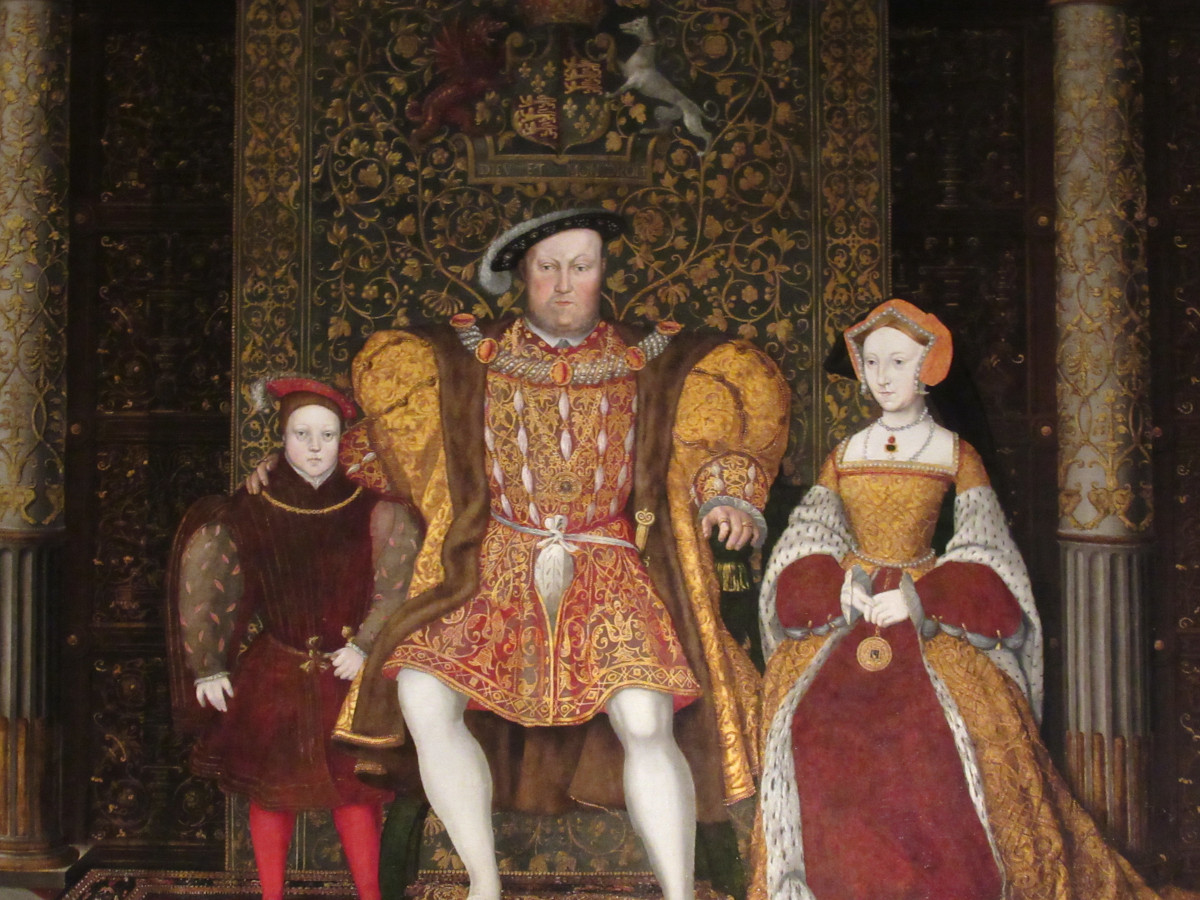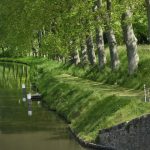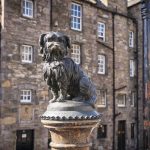This post takes you to Hampton Court Palace, explaining what there is to see there and giving a little background history, majoring on Henry VIII and the palace’s heyday of Tudor feasting, with no shortage of intrigue and drama thrown in. As usual, there is much more detail on the podcast, including stories of the wooing of Anne Boleyn, the downfall of Katharine Howard, the upgrading of the palace by William and Mary and the psychodrama of feuding Georgian monarchs.
a little history
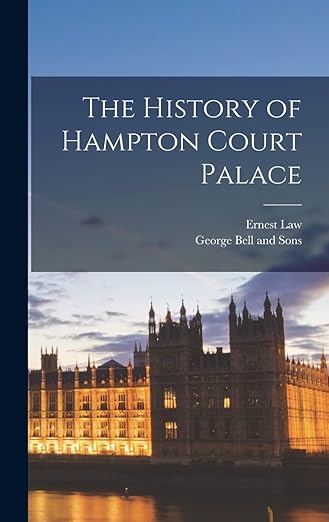
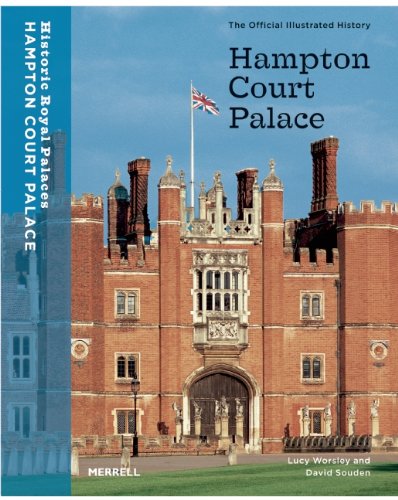
The Wolsey Rooms represent the original Hampton Court, bought by Thomas Wolsey in 1514. He enhanced it greatly, adding a new courtyard and a chapel, building the long gallery overlooking the garden and decorating it all lavishly with some 600 tapestries and plenty of ‘cloth of gold’. Henry VIII grew increasingly jealous and when Wolsey was arrested for High Treason, he took it over immediately and began spending vast sums on Hampton Court. Even though he spent an average of only three weeks a year there, it was the setting for many important moments in his life. All 6 of his wives spent time at Hampton Court, as did his 3 children.
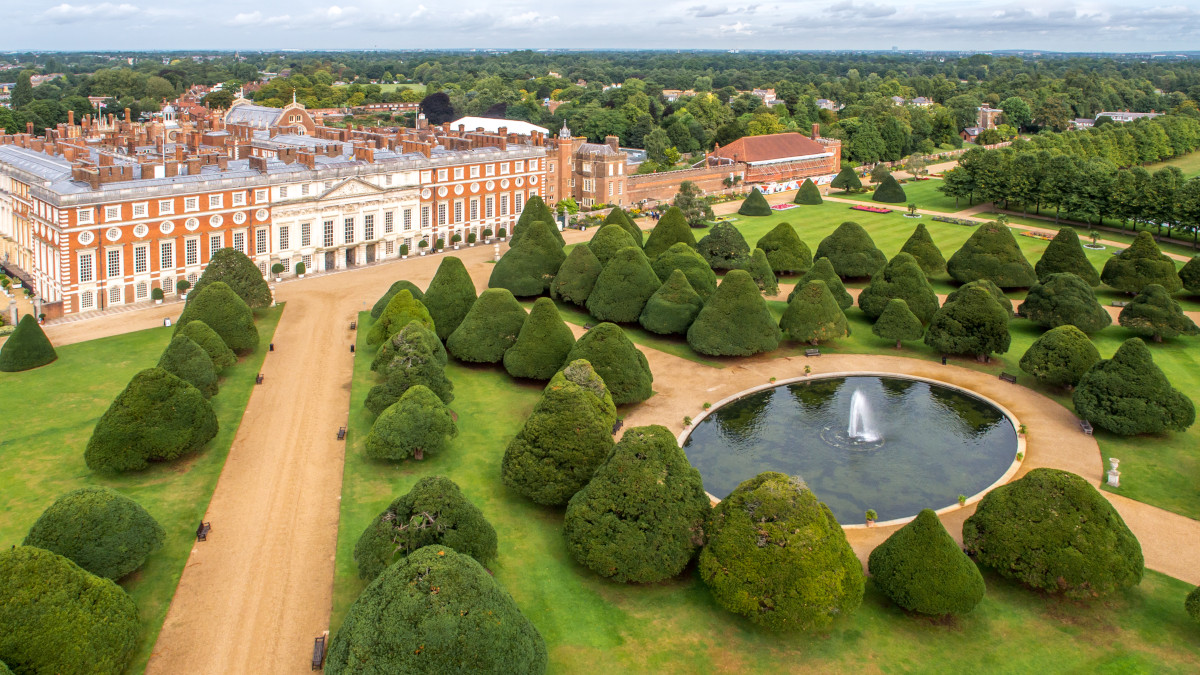
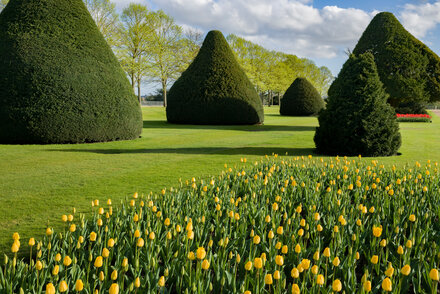
Henry made sure the grounds of his new palace were spectacular. There was a ‘Privy Garden’ with spectacular topiary, a riverside Mount Garden with its own domed banqueting house and a ‘watergate’ where the royal barge could dock. There was a tiltyard overlooked by 5 viewing towers for jousting tournaments, a whole array of other sports facilities – tennis courts, bowling alleys – and the whole was surrounded by a 750-acre deer park. The grounds were the ultimate in pleasure gardens. Much of this has not survived the passage of time, although the grounds are still spectacular – see below.
hampton court palace: the buildings
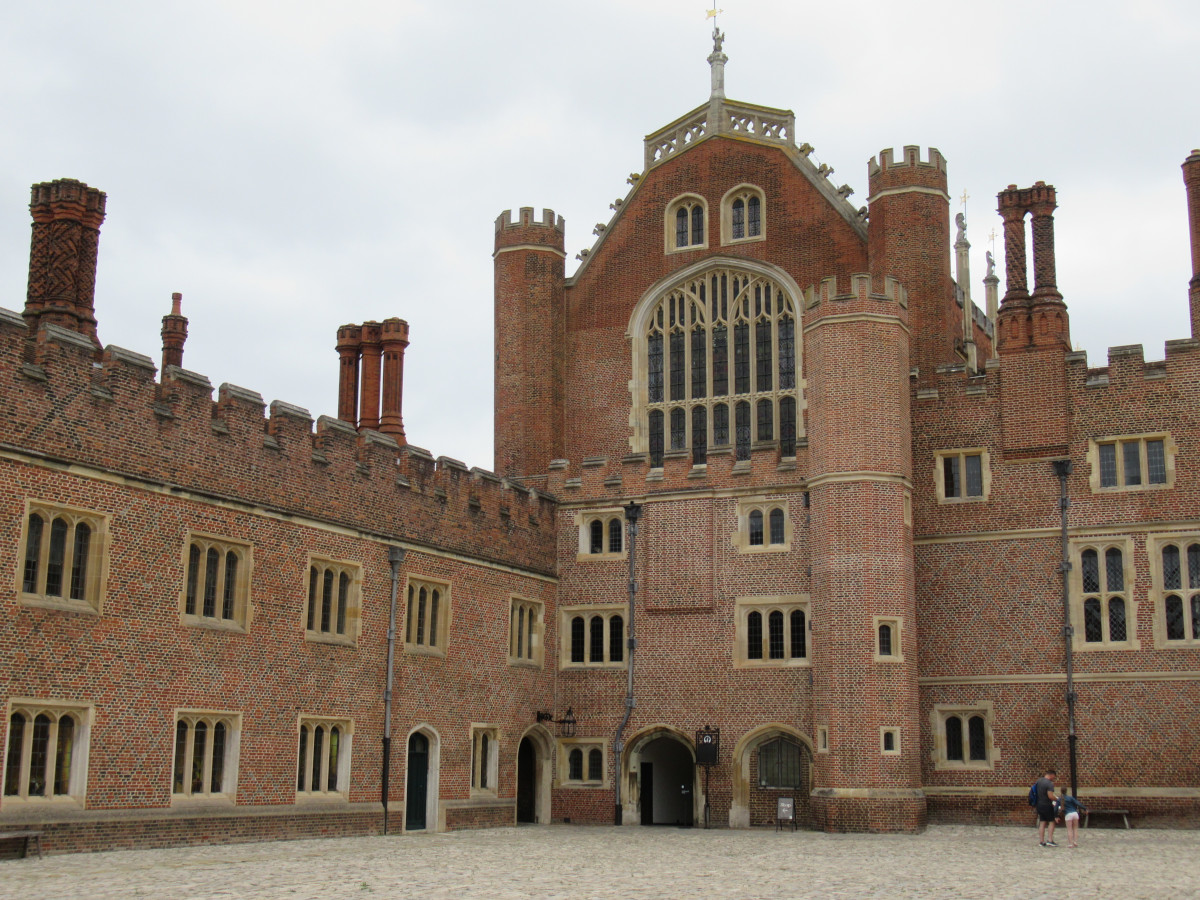
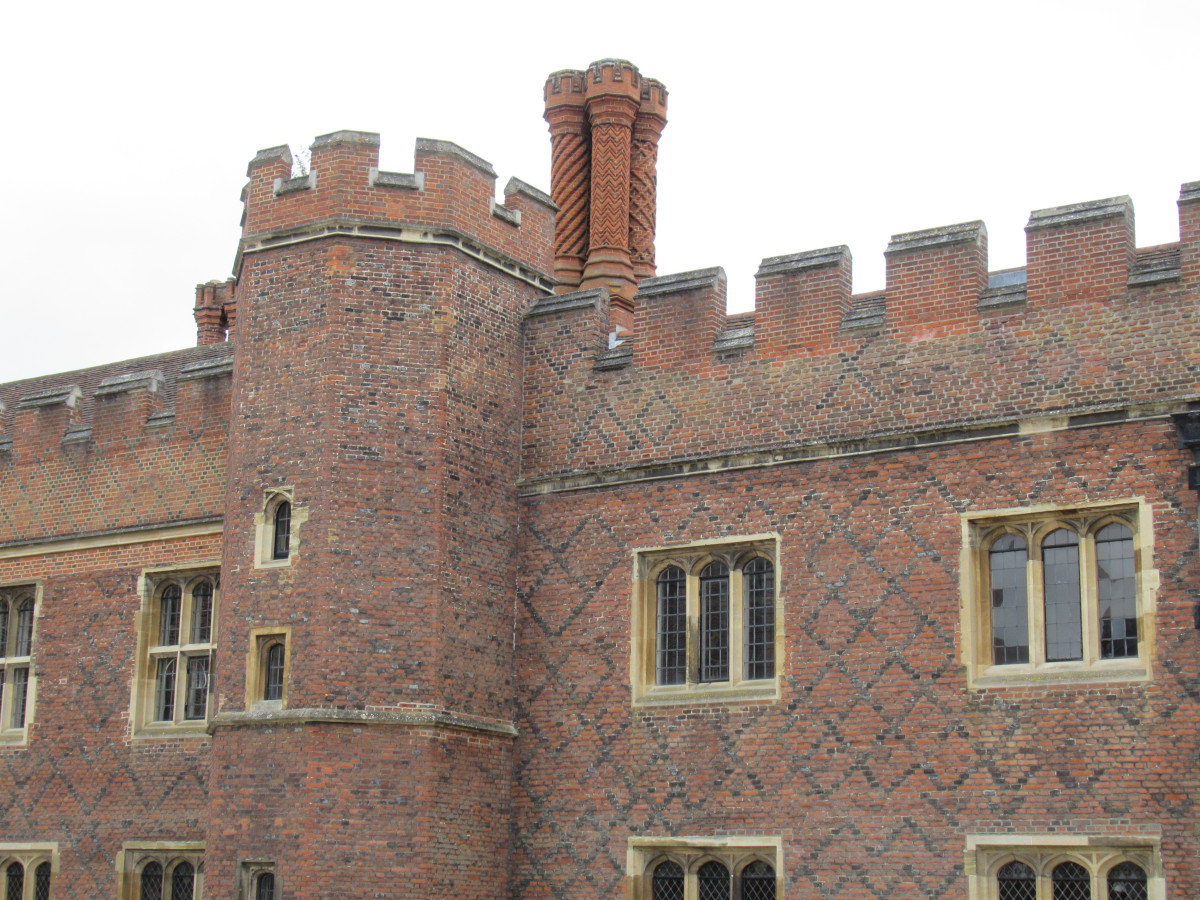
You enter through Wolsey’s Great Gatehouse and pass through the first courtyard to Base Court, the largest courtyard which is surrounded by lodgings formerly used by dozens of courtiers and has a spectacular octagonal wine fountain in the centre, which is still used occasionally today. Going through the Middle Gateway takes you to Clock Court, where Henry and Katharine of Aragon’s apartments were and where the astronomical clock Henry installed can still be seen. Beyond that is Fountain Court, where various of Henry’s other wives had apartments, but which was largely rebuilt in the 17th century.
highlights inside the palace
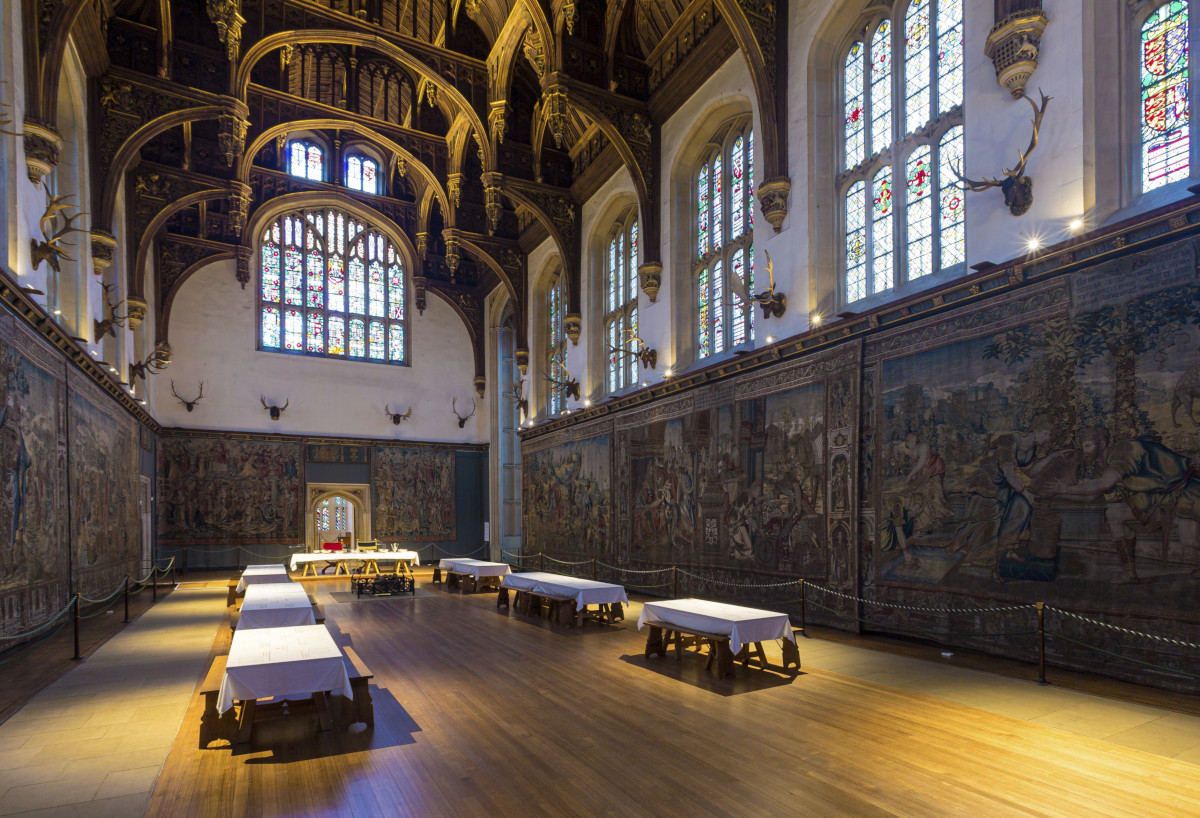
The Great Hall is the most spectacular room. Imagine it as the scene of great feasting under Henry VIII, full of richly dressed courtiers, the tables piled up with gold plate, while Henry’s guests ate enormous quantities of food: a first course including beef, venison, carp, swan and capons and a second offering not just jelly, fruit and tarts, but also pheasant, partridge, quails and larks. Entertainment involved dancing, plays, fools, minstrels and – above all – music. Henry himself owned and played many instruments – 26 lutes for instance – and often played himself. He wrote songs too and one included a line emphasising his love of a rollicking good evening: ‘Pastime with good company, I love and shall until I die.’
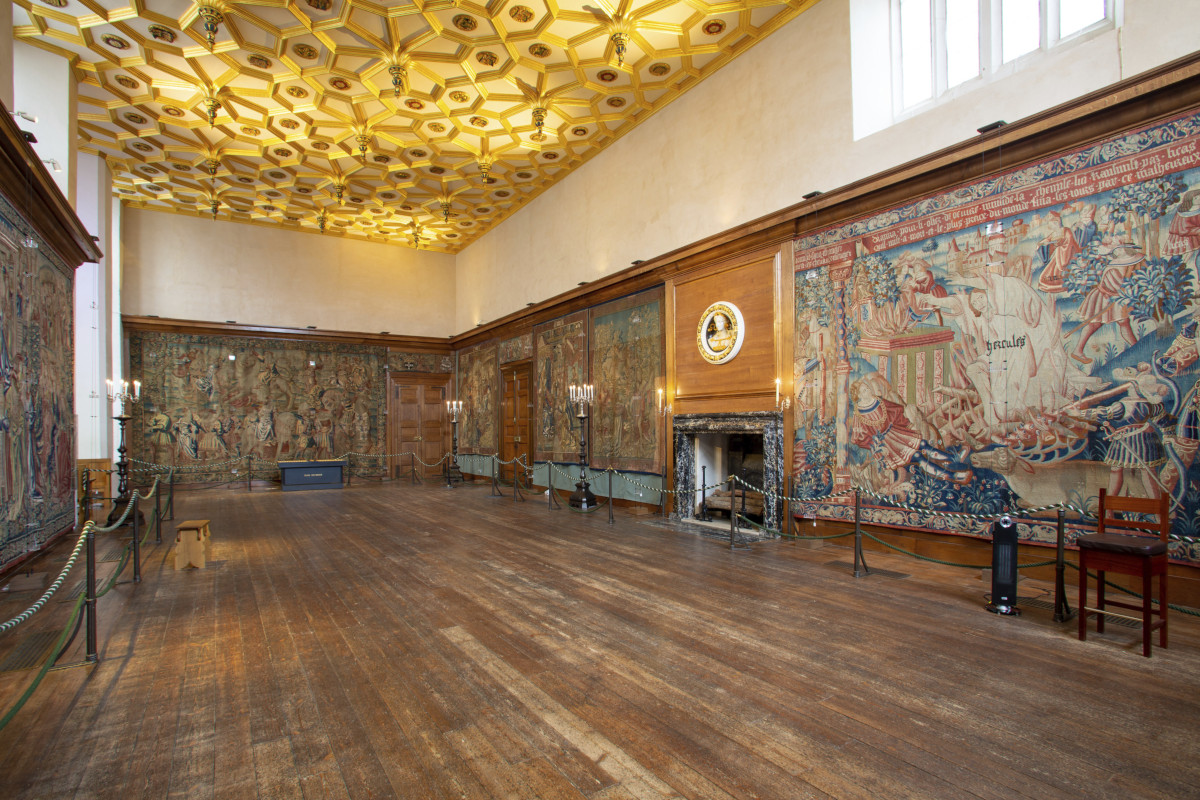
The Great Watching Chamber separates the Great Hall from Henry’s private apartments and was where courtiers kept watch on all who came and went. Their orders were to allow passage to ‘lords, knights, gentlemen officers and other honest persons’, but to bar ‘servants, rascals, boys and others.’ It was here that the court waited in October 1537 while Jane Seymour was in labour until the long-awaited news could be announced that Henry had, at last, a son. Henry is said to have wept with joy and the order went out that bells should be rung ‘from morning till night from every church’ and that 2000 guns should be fired at the Tower of London.

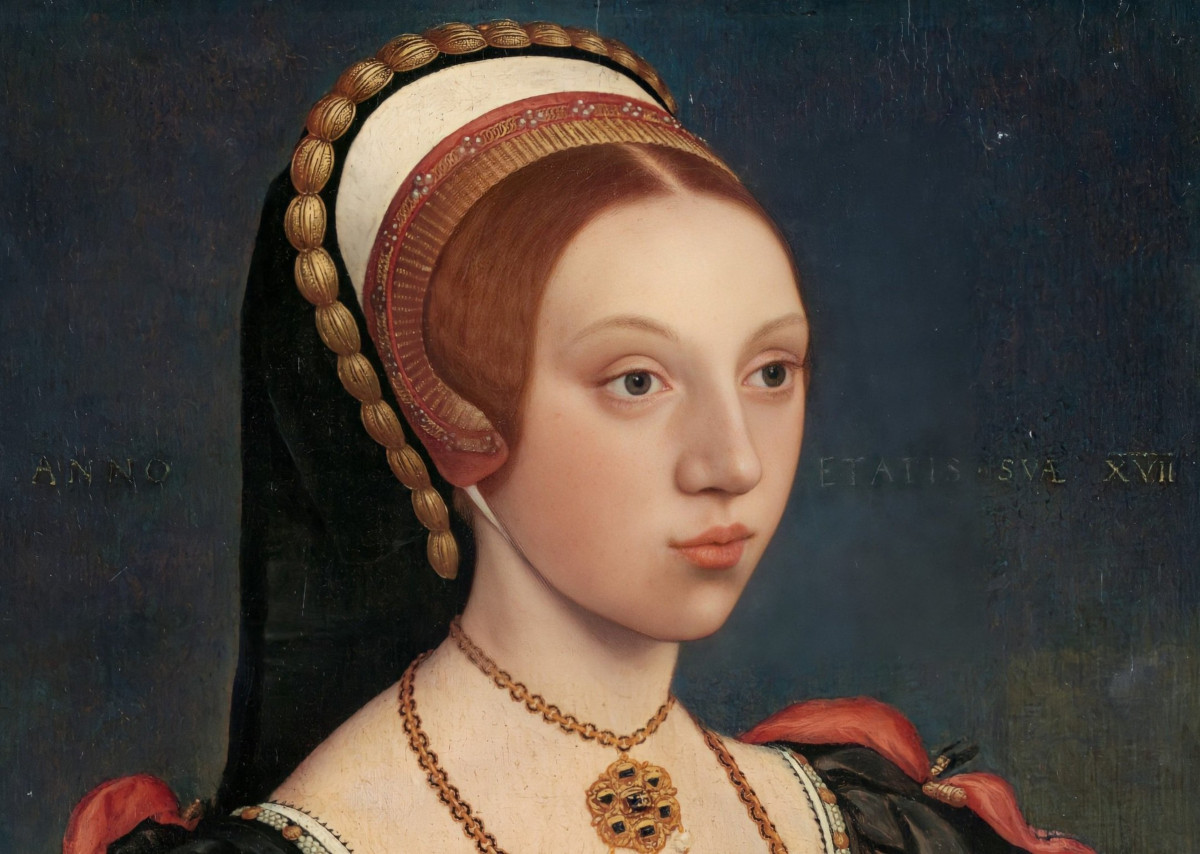
On Sundays and religious festivals, Henry walked in high pomp along the Processional Gallery to the chapel, wearing his crown and ‘his robes royal’, a sceptre in his right hand and a ball and cross in his left. It was here that Catherine Howard was told of the charges of adultery against her and was dragged away as, terrified, she screamed to be allowed to speak with Henry who was in the chapel nearby and must have heard her. But he left Hampton Court shortly afterwards and never saw her again. The corridor is also known as the Haunted Gallery, for it’s said her ghost appears her from time to time.
the chapel and the kitchen
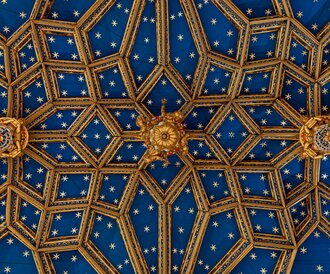
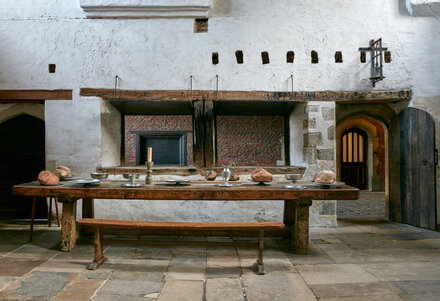
The Chapel Royal is stunning: polished wood panelling and pews and a vaulted ceiling painted a deep blue with golden stars, all overlooked by an upper gallery. It was built by Wolsey and embellished by Henry who added stained glass images of himself and Katherine of Aragon, later destroyed by Oliver Cromwell. It was here that Henry was at prayer when Katherine Howard was arrested.
The Great Kitchen was staffed by a master cook and a host of other porters, maids, scourers and ‘turnbroches’ whose job it was to keep the roasting spits turning. Some of the kitchen rules are displayed, for example ‘that the meat be good and sweet and well-dressed’ and that ‘no cook shall go naked or work in vile garments’.
Hampton Court Under William and Mary
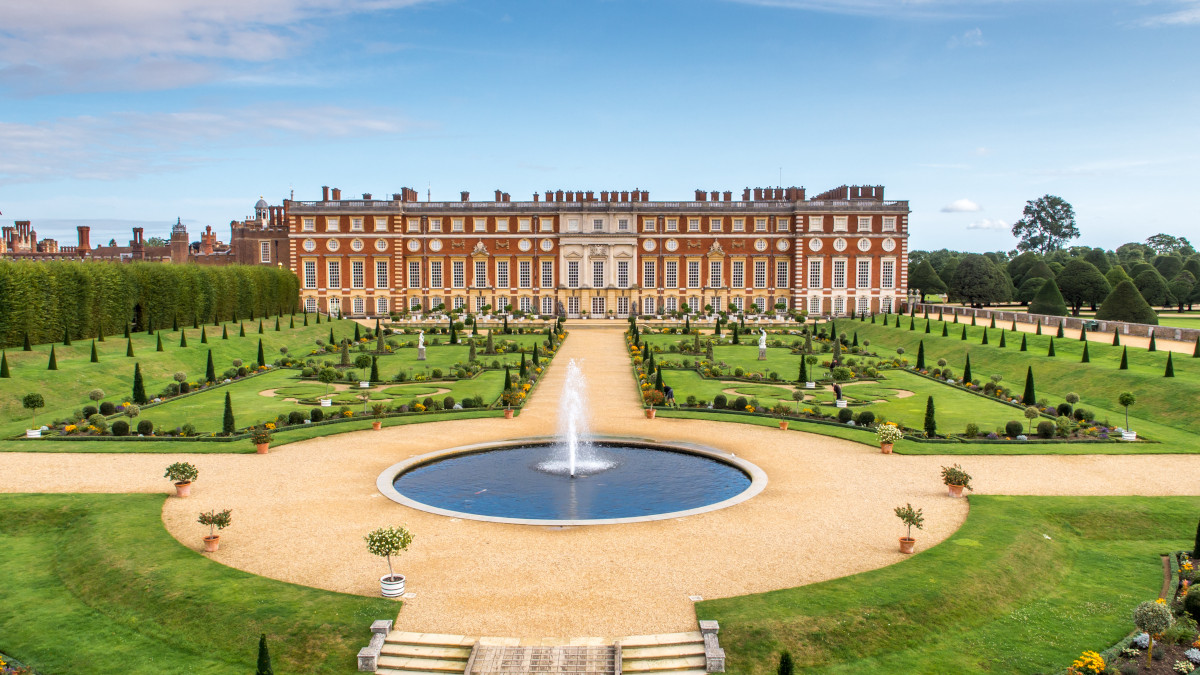
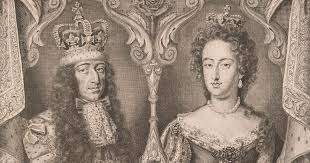
William and Mary, whose reign began in 1689, made many additions to Hampton Court Palace, adding high-ceilinged baroque style rooms which you can visit. The King’s Apartments include a Presence Chamber, where he received visitors, and more private rooms including a Privy Chamber, Withdrawing Room, Great Bedchamber – where the Gentlemen of the Bedchamber attended William’s formal ‘levée’ – and a Little Bedchamber for when he wanted more privacy. The Queen’s Apartments are almost as grand. In her Private Drawing Room you can see objects indicating how she liked to relax – a Meissen tea service and cards for games with her close companions.
here are more stories about royal life at Hampton Court on the podcast: Henry VIII and his various wives, the feuding Georgians and more.
the gardens
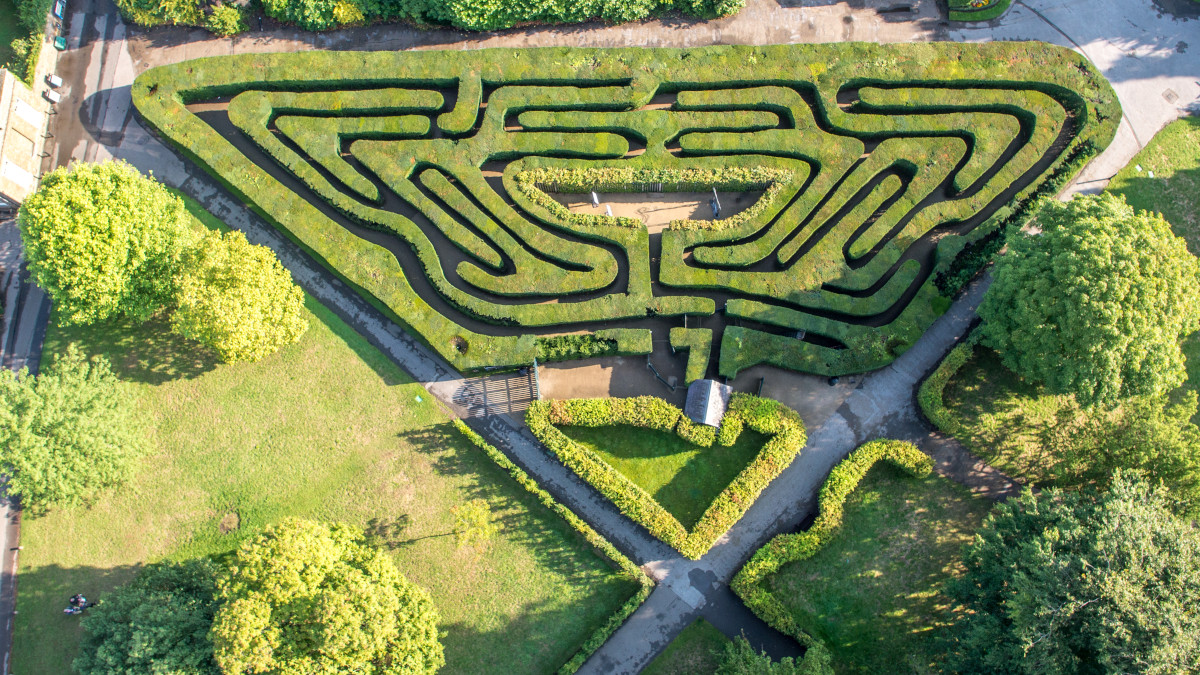

The Gardens at Hampton Court are a highlight: 24 acres of formal gardens, looked after by about 40 gardeners. A half-mile Broad Walk runs pat the house, some 200,000 flowering bulbs are planted each year and the grounds subdivide into lots of different areas: a parterre dotted with pyramid yews, round-headed holly trees and flower beds, a pond garden, orangery garden with plants growing in Delft pottery tubs and a rose garden, to name but a few. There’s the famous maze, originally laid out in 1794 and still popular with visitors, as are the Tiltyard Gardens, designed around the area where jousting tournaments were held in Tudor times.
Listen to the POdcast
Reading suggestions
Hampton Court Palace The Official Illustrated History by Lucy Worsley and David Soudon
The History of Hampton Court Palace by Ernest Law
The Palace 500 Years of Royal History at Hampton Court by Gareth Russell
Explore Hampton Court Palace by Brett Dolman
links for this post
Previous episode The Thames
Next episode Kew and Richmond
Last Updated on November 21, 2024 by Marian Jones

